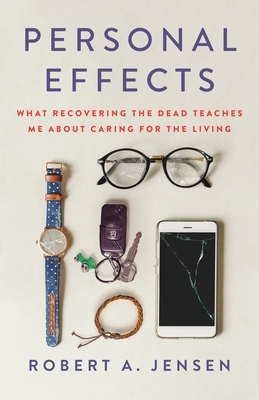
PERSONAL EFFECTS
What Recovering the Dead Teaches Me About Caring for the Living
By: Robert A. Jensen
Published: September 28, 2021
Publisher: St. Martin’s Press
Non-Fiction

Robert Jensen is the owner of Kenyon International Emergency Services, a disaster management company that travels all over the world helping cities, states, and countries recover bodies and personal items from disaster sites like 9/11, Hurricane Katrina, the South Asian Tsunami, or the Murrah Bombing in Oklahoma City. His company works diligently to safely and in an orderly fashion recover and identify bodies and body parts so that they may be properly taken for burial, ceremony, or other rites of passage.
As you might imagine, this is not a happy read. Its pages are full of death and destruction. The images he paints of the communities he travels to after a devastating weather event, plane crash, or terrorist attack are horrifying. But, I can say, without a doubt, his company is who I would want caring for my loved ones after this type of tragedy. Because even though it may seem that he is focused on those who died in the tragedy, his true purpose is to help the living. He can’t give them answers as to why this may have happened to their loved one, but he can bring closure by letting them know they recovered the body (or part of the body), DNA, or a personal item like a watch or an item of clothing, that then allows the family to move to a new normal and without their loved one. Too often, when families don’t have any information on their loved one, there is always a nagging feeling that maybe their family member survived or there is the pain of not properly burying their loved one.
Pretty much any disaster that has occurred over the last thirty years, Robert and his company have been there. It doesn’t matter if it is Christmas morning, his child’s birthday, or if he just got home the night before after being gone for several weeks. If his phone rings, he goes. What has frustrated him and caused him the most discomfort over the years isn’t all the death or sorrowful families, it is dealing with the bureaucracy and governmental red tape. Unfortunately, disasters happen in places around the world with governments that don’t have systems in place for handling tsunamis, plane crashes, hurricanes, or terrorist attacks. Finding out the jurisdiction of the location of the disaster and then managing the various governments involved relating to those who perished in the event can be mind-boggling and a paperwork/red-tape nightmare.
Jensen finds ways to be sure that dignity is the priority when it comes to identifying the deceased and then sharing that information with the family. Thankfully, DNA technology and identification have come a long way in the thirty years Jensen has been involved in this business. Even the smallest skin fragment can hold enough DNA to be able to connect it to a person, which can result in relief and comfort for a family..or not. A number of long-held family secrets have also been revealed in the identification of DNA samples. But, know that the old school forms of fingerprints and dental records are still the most useful and preferred form of identification.
His chapter on the Hurricane Katrina disaster was mind-boggling. It was the costliest and deadliest hurricane in US history. Because the US didn’t have protocols in place for this type of disaster, plus the number of agencies involved in making decisions, made the recovery efforts even more difficult. Between FEMA, the military, public health, Louisiana National Guard, police, and more, many hours were spent discussing HOW to search homes and buildings. For example:
“The US Army said they would search by knocking on the door and asking if anyone needed help. Of course, the dead don’t typically respond. When asked if they would go into homes to recover bodies, the state was told no: under Title 10 of United States Code, the active-duty military can do that….Seven days went by as the state waited for the federal government to respond – in keeping with what emergency planners had been teaching – as their own resources were exhausted from rescue and lifesaving, not to mention from the incredible damage suffered by many people to their own property and the risk to their own families.“
Robert A. Jensen, PERSONAL EFFECTS
To make matters worse, Louisiana’s legal system is based on the Napoleonic Code, not English Common law like the rest of the United States. So, that resulted in each parish being required to issue their own death certificates. So, that meant the location of the recovery mattered even though the storm didn’t care about legal boundaries. This chapter alone was unbelievable and makes me want to read even more about how the recovery process went so wrong for those who suffered from Hurricane Katrina.
There will always be some disaster hitting somewhere in the world. In fact, just this week, we are learning about volcanic eruptions and tsunamis in Tonga. Even though we can’t control the disasters and where they hit, Jensen and his company can help control the response and how people are cared for, both the living and the dead.
For more about Robert A. Jensen or his company, check out his website, HERE.
To purchase a copy of PERSONAL EFFECTS, click the photo below:

Other posts you might like:
Thanks to the publisher for sending a copy of this book for the purpose of this review. This review is my honest opinion. If you choose to make a purchase through the above links, I may receive a small commission without you having to pay a cent more for your purchase.
Posted Under Book Review, death, disasters, non-fiction, Robert A. Jensen
